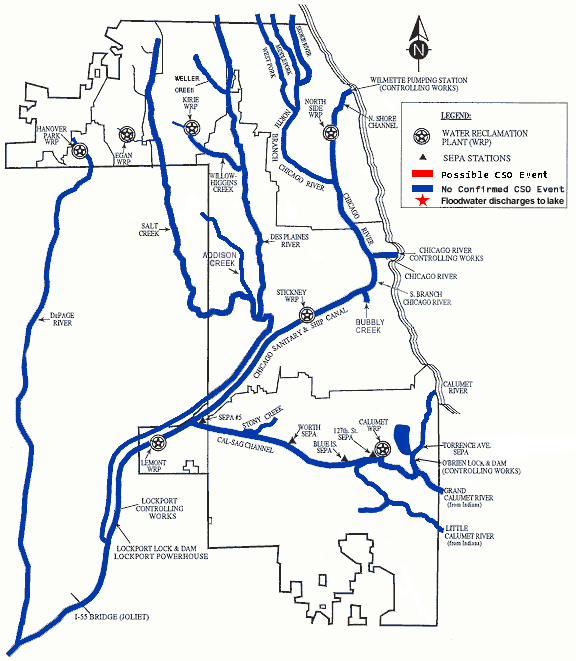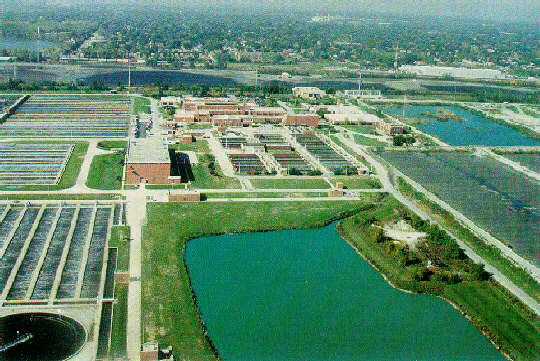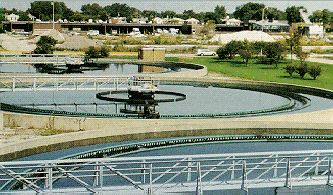| |
CPS Project on Managing Loosely Coupled Networked Control Systems with
External Disturbances: Wastewater Processing
This project, "Managing Loosely Coupled Networked Control Systems with
External Disturbances", is led by IIT Computer Science Professors,
Xiang-Yang Li and Shangping Ren, together with two IIT Engineering
faculty, Professor Paul Anderson from the Department of Civil,
Architectural, and Environmental Engineering and Professor Fouad
Teymour from the Department of Chemical and Biological
Engineering. The award is a three-year National Science Foundation
Expedition grant totaling $750,000, which is one of the 20 large and
medium CPS projects funded by NSF in 2010. Our aim is to advance
wastewater processing engineering procedures by taking advantages of
available cyber technologies that can provide not only sufficient
real-time accurate data collected from ground-based sensors, but also
physics-based climate simulations to effectively predict the impact
from nature on the wastewater processing.
This project is motivated by research issues
identified through collaboration with the Metropolitan Water
Reclamation District of Greater Chicago, which manages the Chicago
Waterway System. The goal of this research is to understand the
waterway as a Cyber-Physical System (CPS) --- one that combines
computation with physical inputs and outputs --- and to provide a set
of strategies and tools for meeting new U.S. Environmental
Protection Agency standards for ammonia regulation scheduled to
take effect in 2014. We plan to update the waterway's systems by
extending the systems with available technologies such as wireless
sensors and networks, and by providing real-time, on-line
monitoring and process control to minimize energy demands and
carbon footprint associated with nutrient control.
|
The mission of the MWRDGC is to ``protect the health and safety of
the public in its service area, protect the quality of the water
supply source (Lake Michigan), improve the quality of water in
watercourses in its service area, protect businesses and homes from
flood damages, and manage water as a vital resource for its service
area''.
With a service area that stretches over 850 square miles and an
equivalent population of more than ten million people, the goal of
fulfilling that mission is challenging. Their ``system'' includes seven
independent wastewater reclamation plants (WRPs) (one is the world's
largest), two major pumping
stations, 30 stormwater detention reservoirs, 109 miles of tunnels,
554 miles of intercepting sewers, and over 76 miles of navigable
waterways.
The total capacity of 7 WRPs is about 2 billion gallons per day.
Treated effluent from these facilities is
discharged to surface waters in the Chicago area.
Many existing WRPs were built in 1930s-1940s. These facilities built
decades ago were not designed for water quality required
today. In addition, currently available treatment technologies can
achieve the required water quality and they are much
more energy efficient (approximately 3% of the
electricity load in US is used on WRP processes. The
concerns over effluent quality and energy consumptions of these legacy
systems are growing.
To overcome the challenges and meet the urgent needs in a timely and cost
effective manner, we need to extend the legacy systems with available
technologies, such as sensors and wireless networks, and provide
real-time, on-line monitoring and process control to minimize energy
demands and carbon footprint associated with nutrient control.
|
 |
 |
 |
| Calumet Water Reclamation Plant is the oldest of the seven wastewater treatment facilities within the metropolitan Chicago area |
Treatment Processes: Primary Treatment, secondary
treatment, Tertiary Treatment |
Copyright © 2010,
Wireless Networking Research Lab, Department of Computer
Science, Illinois Institute of Technology |
|
|



